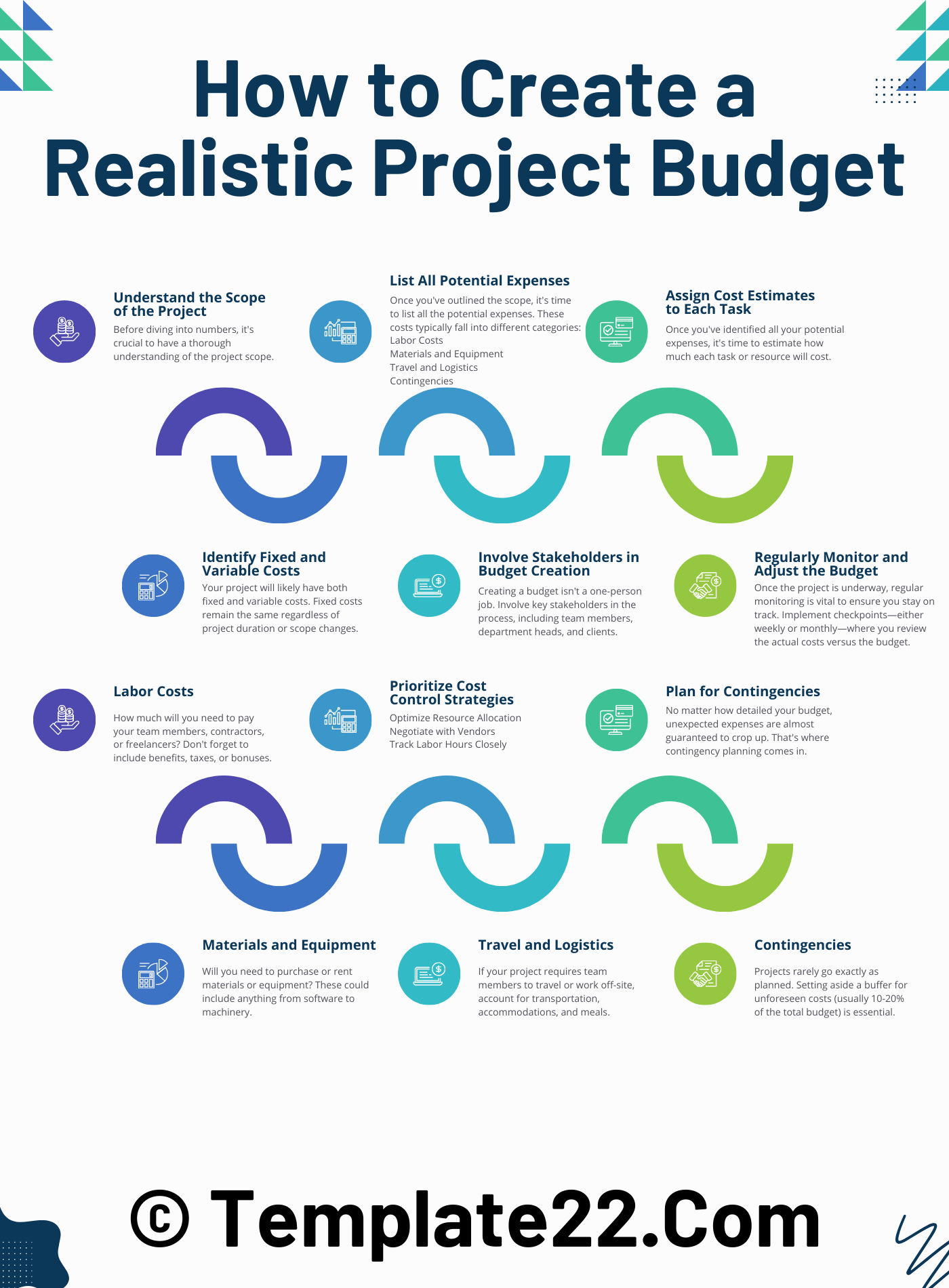 Realistic Project Budget Creation is one of the most critical aspects of project management. Without a well-thought-out budget, projects can quickly spiral out of control, leading to cost overruns and missed deadlines. A budget serves as your financial blueprint, helping ensure your project stays on track, avoids unnecessary expenses, and reaches its goals. In this blog, we’ll discuss the key steps to create a realistic project budget that you and your stakeholders can rely on.
Realistic Project Budget Creation is one of the most critical aspects of project management. Without a well-thought-out budget, projects can quickly spiral out of control, leading to cost overruns and missed deadlines. A budget serves as your financial blueprint, helping ensure your project stays on track, avoids unnecessary expenses, and reaches its goals. In this blog, we’ll discuss the key steps to create a realistic project budget that you and your stakeholders can rely on.
Understand the Scope of the Project
Before diving into numbers, it’s crucial to have a thorough understanding of the project scope. What are the deliverables? What tasks need to be completed? Who will be involved? The more detailed your project plan, the more accurate your budget will be. Take the time to define what success looks like and how you plan to achieve it.
Tip: Break your project down into phases or milestones. This makes it easier to estimate costs and keeps your project on track throughout its lifecycle.
List All Potential Expenses
Once you’ve outlined the scope, it’s time to list all the potential expenses. These costs typically fall into different categories:
- Labor Costs: How much will you need to pay your team members, contractors, or freelancers? Don’t forget to include benefits, taxes, or bonuses.
- Materials and Equipment: Will you need to purchase or rent materials or equipment? These could include anything from software to machinery.
- Travel and Logistics: If your project requires team members to travel or work off-site, account for transportation, accommodations, and meals.
- Contingencies: Projects rarely go exactly as planned. Setting aside a buffer for unforeseen costs (usually 10-20% of the total budget) is essential.
Being thorough at this stage prevents unwanted surprises later on.
CLICK HERE TO DOWNLOAD 300+ PROJECT MANAGEMENT TEMPLATES & DOCUMENTS IN EXCEL
Assign Cost Estimates to Each Task
Once you’ve identified all your potential expenses, it’s time to estimate how much each task or resource will cost. Look at historical data from similar projects or consult with experts who can help you estimate specific costs accurately.
Be realistic, especially when it comes to labor costs. People often underestimate the time it will take to complete tasks. Build in extra time to ensure the project stays on budget if there are delays or unforeseen challenges.
Tip: Tools like Microsoft Excel or project management software can help you track costs effectively. Make sure to update these estimates regularly as the project progresses.
Identify Fixed and Variable Costs
Your project will likely have both fixed and variable costs. Fixed costs remain the same regardless of project duration or scope changes. These might include rent for office space or salaries for full-time staff. Variable costs, on the other hand, fluctuate depending on the scope of the project, such as freelance labor or raw materials.
Understanding these distinctions is crucial because while fixed costs provide stability, variable costs require close monitoring. They are typically the ones that can drive a budget over the top if not controlled.
Involve Stakeholders in Budget Creation
Realistic Project Budget Creation isn’t a one-person job. Involve key stakeholders in the process, including team members, department heads, and clients. This not only helps you get a more accurate estimate but also ensures everyone is aligned with the financial constraints of the project.
By gathering input from others, you can also avoid blind spots. For example, someone on your team might identify a cost you overlooked, or a department head might provide a more realistic timeline for deliverables.
Regularly Monitor and Adjust the Budget
Once the project is underway, regular monitoring is vital to ensure you stay on track. Implement checkpoints—either weekly or monthly—where you review the actual costs versus the budget. This allows you to spot issues early and make adjustments as needed.
Don’t hesitate to revise the budget if unforeseen circumstances arise. It’s better to address the changes immediately rather than let costs spiral out of control. Keep stakeholders informed of any changes so everyone remains in the loop.
Plan for Contingencies
No matter how detailed your budget, unexpected expenses are almost guaranteed to crop up. That’s where contingency planning comes in. By setting aside a portion of your budget for emergencies or scope changes, you provide a safety net that ensures the project can continue even when things don’t go as planned.
Tip: A contingency reserve of 10-15% is typically sufficient, but depending on the complexity and uncertainty of your project, you may want to set aside more.
CLICK HERE TO DOWNLOAD 300+ PROJECT MANAGEMENT TEMPLATES & DOCUMENTS IN EXCEL
Prioritize Cost Control Strategies
As you execute your project, there are various strategies you can employ to control costs:
- Optimize Resource Allocation: Ensure that you’re using your team’s time and skills effectively. Avoid having highly paid experts doing tasks that can be handled by junior staff.
- Negotiate with Vendors: Don’t be afraid to ask for discounts or better payment terms from suppliers.
- Track Labor Hours Closely: Labor costs often account for a large portion of the budget. Use time-tracking tools to make sure hours spent on tasks align with estimates.
By being proactive, you can avoid the budget creeping up unnoticed.
Conclusion: A Well-Managed Budget Leads to Success
Realistic Project Budget Creation is as much about preparation as it is about execution. By understanding the scope, estimating costs accurately, involving stakeholders, and keeping a close eye on expenses, you can navigate any financial challenges that arise during the project. Remember, a budget isn’t a static document—it’s a tool that helps guide your project to success. With careful planning and monitoring, your project can come in on time, on budget, and with fewer headaches.
